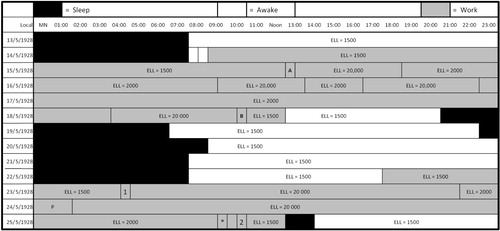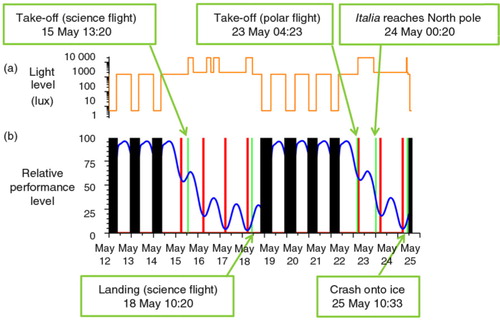Figures & data
Table 1 Neurocognitive effects of sleep loss, adapted from Durmer & Dinges (Citation2005) and other sources.
Fig. 1 Raster plot of Nobile's estimated sleep–wake–work cycles and light levels. Days are on the vertical axis and hours of the day on the horizontal axis. Black areas indicate periods of sleep, white areas indicate time spent awake on the ground and grey areas represent the flight. Estimated light levels (ELL) are shown for wake and flight segments. The timing of events A, B, 1, P and 2 are indicated: A is launch of the science and exploration flight; B is landing of the science and exploration flight; 1 is take-off of the polar flight; P is passage over the North Pole; and 2 is crash onto ice. The ELL were (i) for sleep, 5 lux; (ii) for daytime on the ground, 1500 lux; (iii) for flight in the clouds, 2000 lux; and (iv) for flight in clear skies, 20 000 lux. The asterisk indicates the 30 min when the ELL was 20 000, before returning to 2000 lux.

Fig. 2 CPSS plot of predicted performance relative to baseline for an individual with the sleep–wake cycles of General Umberto Nobile from 12 to 25 May. (a) Estimated light levels (lux). (b) Relative performance level, compared to a well-rested baseline. Sleep times are black boxes; times of core body temperature minimum, which reflect the expected times of worst performance, are red vertical lines; key events are green vertical lines; and the performance curve is blue.

